
Looking to go whole food, plant-based but nervous to do it overnight? Elizabeth’s story can help you see what steps some people take to get there!
The following article is reprinted from the blog Mountains & Magnolias with the author’s permission.
I’ve always been a lover of vegetables. Mama Chris often referred to me as her “little rabbit” when I was young due to my ability to put away plate full of fresh carrots, celery, radishes, and sugar snap peas. That said, as I grew into an adult and started really getting into cooking, I identified as a Southern cook, meaning there was a meat or dairy product in almost everything I made. I also adopted a lot of French recipes which only added to this philosophy.
When I stopped eating meat altogether I realized that in spite of this supposed love of pork, beef, and chicken, I had eaten very carefully, especially at restaurants, gingerly chewing the tiniest bites in case any unsavory animal part had made its way into a dish. It wasn’t until I began eating only vegetables and found myself truly “digging in” to my meal with gusto, that I noticed the change. My husband teases me saying that I’ve been a “closet vegetarian” for most of my life. When I cooked, I treated raw meat like it was a sort of biohazard, limiting how many surfaces it contacted and rarely touching it with my bare hands. (Which blows my mind now… because if I’m not even willing to touch something, why on earth am I eating it?!?)
As I got into my 40s, I started noticing that I didn’t seem to digest meat as well as I used to, even tender filet mignon. A tiny thought started entering my mind that becoming a vegetarian might be in my future.
And then a few key events happened:
The first was at a local diner, a true Denver establishment that has been around for decades. If anyone knew how to make an excellent Reuben (one of my favorite sandwiches), it would be this place. My sandwich arrived and, as I tried to bite into it, I realized that the meat was cut so thick and with so much gristle, it was going to be impossible to eat it politely. Annoyed, I started removing a few “slabs” and putting them on a plate. I tried again to take a bite. Same issue. This process repeated a few times until I could finally bite into my sandwich, which at this point was nothing more than sauerkraut and Swiss cheese. But the plate on which I had discarded the meat—I get nauseous even typing this—the only possible way to describe it is a disgusting pile of carnage. I covered it with a napkin and thought more about this “vegetarian” thing. It was one of the first times I thought of the actual animal I was eating.
The next incident was on a flight to Australia, where I was scheduled to speak at an education conference. For some reason, I had ordered vegan meals when booking the flight. The trip was months later and I had completely forgotten this detail.When I was handed my tray for the first meal and the flight attendant murmured, “Vegan plate?” I took it, vaguely remembering my choice. To my surprise, it was a delicious lentil dhal with rice and steamed vegetables. I devoured every bit of my dinner while looking at what others had: questionable chicken smothered in over-salted tomato sauce or gray bits of beef swimming in a fatty sauce with overcooked pasta. This continued to happen throughout our 16-hour flight—I enjoyed lovely, healthy dishes of grains, fruits, and vegetables while the other dishes didn’t appeal to me whatsoever.
Once we were in Australia, I had my last beef and chicken meals and happily declared myself a pescatarian.
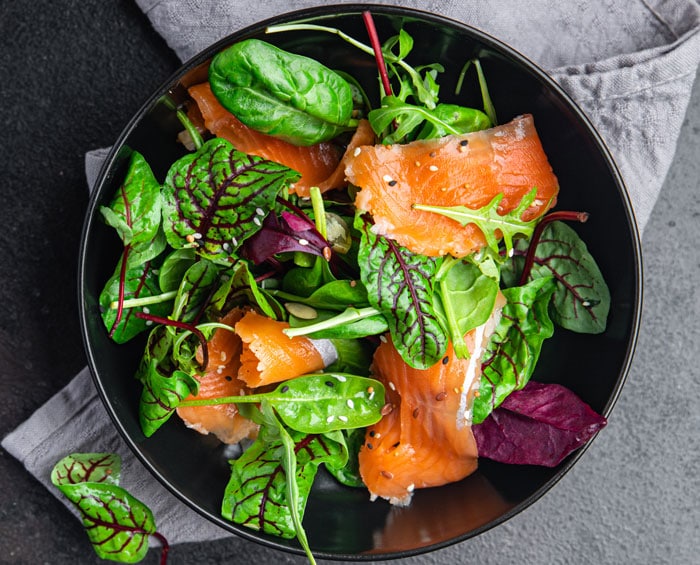
We arrived in Australia early, so we had a few days of vacation before the conference started. We visited wineries, different neighborhoods, sites, and gardens around Melbourne, and—this is important—a wildlife sanctuary.
There’s something about seeing an animal live for the first time that you’ve only seen on TV or on the internet or in books. By this time, I was exploring my newfound pescatarian identity and had enjoyed several fish dishes during our trip. As we toured the sanctuary, I was enamored with these charming koalas, an industrious platypus, and surprisingly noble kangaroos. I recall thinking, “Would I ever consider eating one of these animals? NEVER!!!” (Though I know eating kangaroo is a practice in that part of the world.) Which got me to pondering: if I had never seen a chicken, cow, or pig live, would I have the same feelings now about those animals? Was it because I’d grown up being taught that these animals exist for our consumption that I hadn’t considered their dignity and right to live before? Probably.
As much as I loved cheese, I had to admit that it did a number on my digestive system. And made me gain weight. And was so freaking addictive. Why was that?
On the first day of the conference, my husband and I met for lunch at an Italian spot close to the convention center and I ordered a fish that was new to me. As we tucked in, I couldn’t help but notice that my barramundi wasn’t as good as the fish entrées I had enjoyed in the days before. In fact, it was really fishy and I kept having to add lemon and salt to overpower the unsavory taste and smell. (Oh, how I wish I had listened to my body during that meal.)
By that evening, I wasn’t feeling myself, declining any dinner or appetizers being passed around at the networking reception. By early the next morning, I was full-on sick to my stomach, trying desperately to get ready for a panel discussion and book signing later that day. I somehow managed to get through an entire day of smiling, shaking hands, serving on a panel, and signing books, all while excusing myself whenever I could to sprint to the restroom. (Apologies to the attendees and organizers of this conference. To say I wasn’t 100% is an understatement.)
So, as of Thursday, October 4, 2018 (Australia time), I officially became a vegetarian. But there was no way, I told myself, I could ever be a vegan. How could I? My weekday breakfast of choice was a boiled egg. How would I get my protein? And then the CHEESE …OMG, how could I ever give up triple cream and Mimolette?!? Pizza, beer–cheese soup, lasagna—there’s not a chance I would give those up. Besides, I reasoned, those foods don’t involve animals dying. Right?
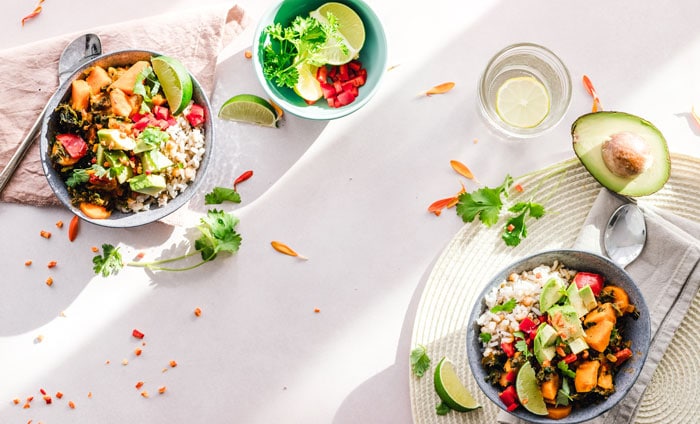
As with any major life change, there are often external tidbits of information, headlines, and stories that ultimately wind up influencing your thinking, but there is almost always an initial internal voice, however small and however much you may try to ignore it, that helps to push you toward a new level of awareness. I was learning externally how abusive factory farms are to animals and how much harm they caused to the environment. If anyone treated a dog or cat in the manner pigs, cows, and chickens are treated (yes—even “free range” and “organic”), they would be arrested, face fines, and be condemned by society, at least in Western cultures. But it wasn’t the external messages that first reached me. The first and loudest voice was the internal response of not digesting meat well or feeling disgusted with a meal.
Similarly, now that I had omitted meat from my diet, I became acutely attuned to what I was eating—especially the animal products. Was I enjoying my morning boiled egg? Or, if I was really honest with myself, did eggs occasionally gross me out? What exactly was I eating here? Also, as much as I loved cheese, I had to admit that it did a number on my digestive system. And made me gain weight. And was so freaking addictive. Why was that?
I started reading articles online with some key questions in mind. Eggs have gone back and forth over the years in nutrition circles from “amazing packets of protein” to “guarantees of high cholesterol.” What should I believe? And why do so many of us find cheese so impossible to pass up? Several resources helped me to arrive at some answers. Some of the documentaries and articles are a little over-sensationalized, but still contained enough information that made an impact on my thinking.
One of the most compelling articles discussed the role that cheese and other fatty foods play in our brain’s reward system. Though calorie scarcity isn’t a problem for most of us, we’re still hardwired to like things that provide a hefty dose of fat and carbs. The more I thought about what I was actually eating when I ate cheese, the less I wanted it. After all, what is cheese besides curdled/molded milk from a cow or goat? The purpose of that milk is to act as a growth hormone for a baby that will grow into a 1200-pound mammal (in the cow’s case). Picture eating cheese made from any other mammal’s milk (rat, hippopotamus, chimpanzee, human)! Our gut reaction to that idea is likely the one we should also have for cows and goats, yet we’ve so normalized consuming the milk from those animals that we don’t think twice about it.
Because it’s such a potent growth hormone not meant for humans, dairy is closely linked to acne, weight-gain, hypertension, and cancer. (Here’s one article that sums up my feelings on dairy.)
What I found most disturbing is how dairy cows, laying hens, and their offspring are treated (even the ones from “free-range” or “organic” farms). I don’t want to be too graphic, but I encourage people to do some research on how factory farms operate. Anyone who says to me, “I couldn’t live without eggs/cheese/bacon,” always makes me think, “I could show you a few videos and you might think differently.” These animals endure a miserable existence, a short and tortured life that I wouldn’t wish on anyone or anything.
My husband and I spent Thanksgiving in Savannah, Georgia and it was there that I ate my last dairy and eggs. (What is it with me and making major diet changes while traveling?!) On Sunday, November 25, 2018, I bought my first vegan groceries from Savannah’s charming Brighter Day market, and I’ve never looked back.
Since then, we’ve come to rely on several restaurants and a grocery-delivery service for new recipes. I’m amazed by how many of my favorite things are available in vegan form: Reuben sandwiches, mac & cheese, and ice cream to name a few.
Once we made the transition, I remember thinking, “That’s it. Now that we’re vegan, we couldn’t possibly go any healthier.”
But of course, we could…
One of the primary things that made the transition to veganism easier was the overwhelming amount of “replacement” ingredients available. Whereas I had pictured veganism being a life of abstention, I was amazed that we were able to enjoy Reubens from Native Foods, pizza from City O’ City, and homestyle mashed potatoes and gravy from Watercourse. We started cooking our own vegan dishes and were thrilled with how easy, delicious, and familiar they were.
There came a point, however, one day while biting into a juicy “cheeseburger,” that I thought, “This might be vegan, but it can’t possibly be healthy food.” I started to wonder how often I should eat vegan comfort food versus fresh vegetables, grains, and legumes. I also wanted to make absolutely certain that we were covering all of our nutritional needs, namely protein, iron, and vitamin B12.
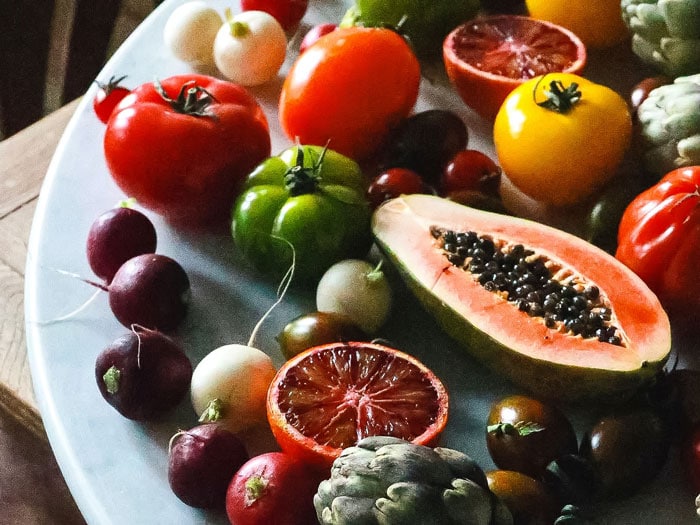
I found the book Becoming Vegan: The Complete Reference to Plant-Based Nutrition (Comprehensive Edition) to be extremely informative. I also decided to take the online Plant-Based Nutrition Certificate Program through the T. Colin Campbell Center for Nutrition Studies (CNS) and Cornell University that was eye-opening, particularly in showing how overblown our assumed protein needs are and how eating animal flesh far exceeds our daily requirements and leads to a number of avoidable illnesses. While I still enjoy the occasional vegan comfort food or treat, I try to make the majority of my diet whole food, plant-based or (WFPB).
I have to admit, once I started following a mostly-WFPB diet, I was feeling pretty self-congratulatory. I had finally conquered so many bad habits and now I had a strong chance of living a long life without many of the terminal diseases that plague modern cultures. I lost seven pounds, had zero digestive issues, and watched my face, hands, and joints shrink as the inflammation (which I hadn’t even realized I had) went down. I felt on top of the world. Wooo! Look at me being as healthy as I can be! Out of curiosity, I looked up a list of known and probable carcinogens to see how I was doing in eliminating them (at least, those over which I have control).
Ethanol and acetaldehyde… AKA “alcohol.”
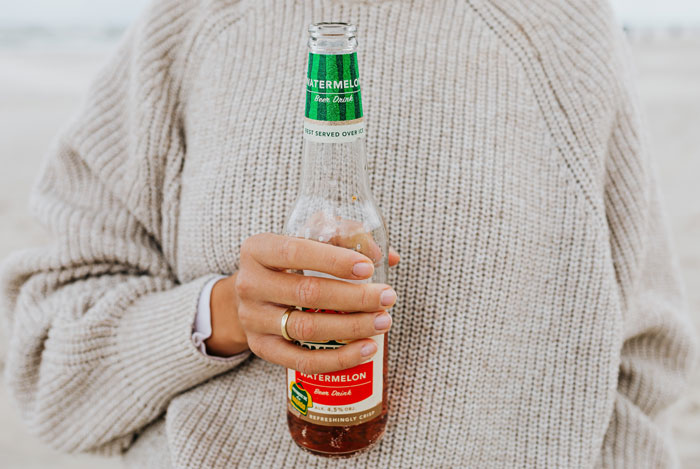
Anyone who knows me personally knows how much I adore champagne. While I find dry rosés, crisp whites, and medium-bodied reds delightful, I have been a champagne lover for years. I love the celebratory pop (or sigh, depending on your method) of opening the cork, that mouthwatering mix of fruit + yeast + effervescence, the elegant flutes, and the very history of champagne itself, especially that of the Widow Clicquot. As my budget grew over the years, so did my ability to explore higher-end vintages, tour dozens of wine countries, and join various wine clubs. And drink more champagne.
While I feel I never crossed the line into alcoholism (thank goodness), there’s little doubt that I was drinking more than was healthy. This is especially true according to the “seven units or four glasses per week” guideline or, most recently, the 2018 study that affirms there is no safe amount of alcohol.
I participated in my first Dry January in 2018 and had to admit that going without a glass of hard-earned bubbly in the evening was more difficult than I liked to admit. I managed to abstain all the way until mid-February, but then I returned to old habits. I tried again in January of 2019 with some success. However, even these imperfect breaks from drinking provided some new insights on the benefits of abstaining. I was sleeping better and my face looked younger. I began to wonder, in the words of Ruby Warrington from Sober Curious, “Would life be better without alcohol?”
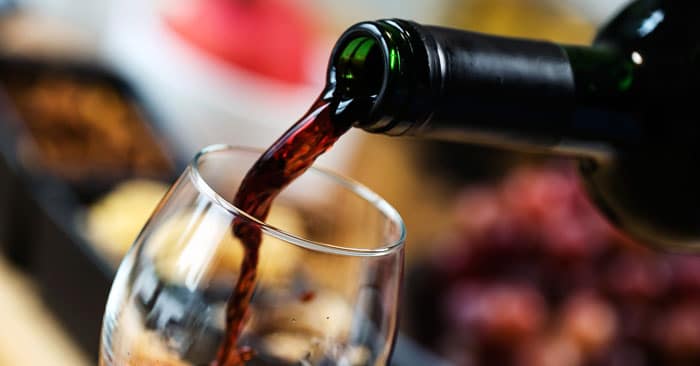
As I began to get more serious about nutrition, yoga, and other wellness habits, drinking started to become a glaring hypocrisy that didn’t sit well with me. I could have all the fresh veggies, protein shakes, and matcha smoothies I like, but none of that was going to counterbalance the fact that I was literally poisoning myself on a regular basis. I wanted to change how I thought about alcohol. It’s one thing to desire something and develop the strength to abstain (which is great), but what if I could somehow not even want it?
A serendipitous bout of strep throat in early May, followed by ten days on antibiotics, gave me the opportunity for which I was looking. By the time I was finished with the medication, it had been two weeks since my last drink. I decided to try something insane—an entirely sober summer. Between “rosé all day” in the park, Colorado’s many microbreweries, and numerous gatherings and parties, summer is prime drinking season. If I could abstain over an entire summer, I reasoned, I could do anything. I stocked up on kombucha and shrub mixers (a non alcoholic apple cider vinegar drink) and invested in a few fancy new flutes. Who wouldn’t feel celebratory drinking something like this?
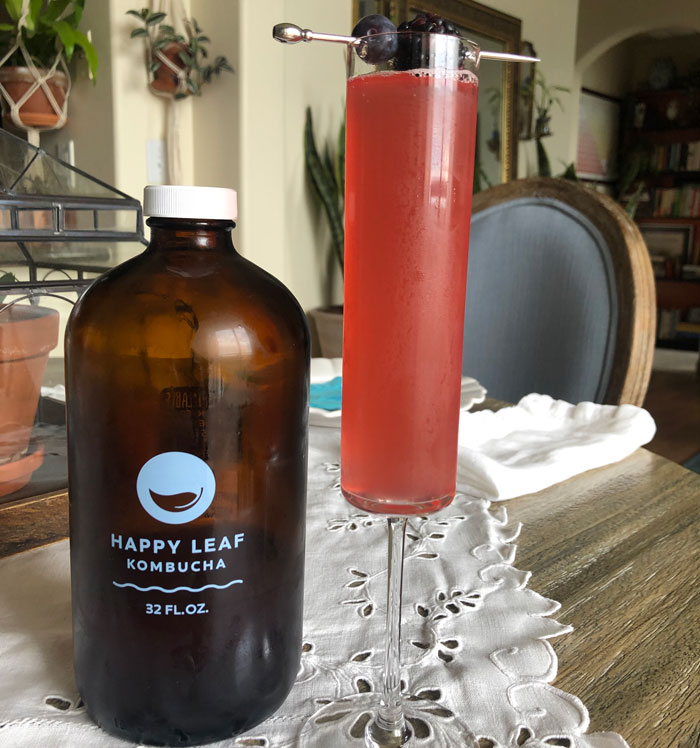
I also came across an amazing book that changed everything for me: Annie Grace’s This Naked Mind: Control Alcohol, Find Freedom, Discover Happiness & Change Your Life. She does a wonderful job of describing the chemicals found in alcohol, how it impacts your various organs, and why it affects your mind and body the way it does. I was floored to learn of alcohol’s link to skin cancer, that it’s the reason why I was waking at 3:00 a.m. with my “worry wheels” churning (I thought it was just age), and that the reason it so effectively “takes the edge off” is because of mild withdrawal symptoms, even in moderate drinkers.
Now that I’m two and a half months in (only four glasses of bubbly since declaring my sober summer in mid-May!), I’m LOVING how I feel. My sleep is incredible—truly restorative, “dead to the world” kind of sleep. My skin is brighter. My mind is sharper, with more focus. Weirdly, I find that I crave water like it’s some kind of magical elixir. (Is it not?) I honestly can’t get enough water. Perhaps most gratifying, I’ve noticed a Zen-like calmness—sometimes even euphoria. Could it be that my constant worrying, overplanning, anxiety-ridden ways weren’t just “middle-aged life” or “who I was,” but rather, at least in part, a side effect of a seriously potent toxin? (A toxin which takes DAYS, by the way, not just 24 hours, to fully leave your system, contrary to popular assumptions.)
It has been a crazy journey and transition that’s still very much in progress. There’s no doubt in my mind that I’m vegan for life, but I don’t know where I’ll land with alcohol. I’m not saying I’ll never have another drink again, yet my thinking about alcohol has definitely changed. I wonder if I’ll feel like Annie Grace who states that she drinks as much as she wants as often as she likes…but nowadays, that’s “none” and “never.” What a sense of freedom!
Copyright 2025 Center for Nutrition Studies. All rights reserved.
